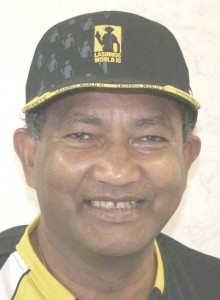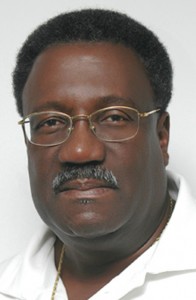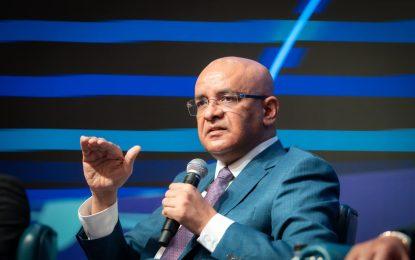Latest update February 24th, 2025 9:02 AM
Guyana has played a pivotal role in West Indies cricket
Jan 18, 2009 Sports
By Sean Devers
As Guyana commence another first-class cricket season, it’s important that the young players are taught about the significance of cricket to the social metamorphosis of West Indians and the role that Guyana played in West Indies cricket.
Since West Indies gained Test status in 1928, Guyana has played a pivotal role in the development of the game in the region and has contributed seven Test Captains.
Guyanese Timur Mohamed, Roger Harper, Andre Percival, Narsingh Deonarine, Leon Johnson and Steven Jacobs have also led the West Indies at the under-19 level.
In the early days the West Indies team comprised players from the British Federation along with British Guyana, located on the South American mainland.
Today the team encompasses players from the English speaking Caribbean and Guyana (formerly British Guiana before May 1966).
In a region dominated by ‘whites’ in the days of slavery and indenture-ship, cricket has played an important role in the social, economic, cultural and political development of Caribbean people.
In 1808 the British abolished the slave trade while slavery itself was abolished in the British West Indies in 1833.
By 1838, agriculture production in British Guiana had fallen by 60 percent and plantations were being shut down since most of the freed slaves refused to work for plantations owners who had mistreated them.
With most of the freed slaves heading for towns or forming villages of their own, the plantation owners, in search of cheap labor, turned to immigrants from England, Germany and Ireland; starting the indentured system.
However, due to the tough working conditions, these workers did not last long.
During the days of slavery when the British were growing sugar cane in British Guiana, they were also powerful in other parts of the world and had entered an Indian state called Uttar Pradesh in 1765.
Under British rule in India, thousands of Indians were unemployed and living in poverty. Many who wanted to escape the poor living conditions opted to go to the ‘new world’ to work as indentured servants on the sugar plantations in British Guiana, Trinidad and Jamaica.
By the 1960s Indians also settled in smaller numbers in St Lucia, Grenada, St Vincent and St Kitts.
The first batch of 244 Indians arrived in British Guiana on a British ship named Whitby on May 5th 1838 and up to today many of their descendants still work on the sugar cane Estates in Guyana.
Those early days exposed the freed slaves and indentured servants to cricket which was mainly played by British Military teams. Since then cricket has played the biggest role in uniting West Indians from different Islands, giving them a sense of pride and self worth.
Cricket for West Indians goes way beyond the boundary in a region populated by over ninety percent non-whites.
It was the only opportunity for most people in the British West Indies and British Guiana to in the early days to gain recognition. Cricket in the West Indies was a tool to gain respect and equality for a people desperately trying to emancipate themselves from the mental slavery that still engulfed their daily lives.
The whites, although being the population’s minority, still controlled cricket in the West Indies long after slavery ended at a time when the class and status structure was still strong in the region.
It was not until the 1950s that non-whites were given leadership roles in regional cricket teams.
Black players like Frank Worrell, Clive Lloyd, Viv Richards and Brian Lara along with those of East Indian decent like Rohan Kanhai, Alvin Kallicharran, Shivnarine Chanderpaul and Ramnaresh Sarwan were to eventually assume leadership roles in modern West Indies teams.
It was in fact on the sugar cane plantations of Port Mourant in British Guiana that Clyde Walcott (who worked with the Bookers Sugar Estate in the 1950s and 1960s) discovered Test batsman Kanhai, Basil Butcher and Joe Solomon.
A lot has changed since those dark days of the 19th century but cricket is still the ethos around which West Indian society revolves.
Although the inaugural first-class match in the West Indies was played in 1865 between Barbados and British Guiana at the Garrison Savannah and the first cricket tour to the West Indies was made in 1888 by an American team, it was not until 1896 that a regular inter-territorial competition was played between British Guiana, Barbados, Trinidad and Jamaica.
West Indies won their first Test in 1930 at Bourda in British Guiana, beating England by 289 runs in the third Test of that series.
Guyanese Maurice Fernandes became the first captain to win a Test match but even though he had participated the year before in the inaugural Test series in England, this was to be his only Test as Skipper and his two-Test career was soon over.
In those days a captain was appointed from each country the match was played in during a home series and four captains were used in the first home series in 1930, including Trinidadian Nelson Betancourt who made his debut at 42 years, 242 days and still holds the record as the oldest West Indian to make his debut.
Guyana hosted the first ever One-Day International in the West Indies when the regional team played Pakistan at Albion in Berbice in 1977and produced several players who performed outstandingly at the International level.
In the 1948 inaugural series against India, the 28-year-old Robert Christiani (107) became the first batsman from Guyana to score a Test century. He batted at number eight in the order and shared in the record for the most centuries (4) in the same West Indies innings in a high scoring first Test in Delhi in November 1948. This record was later equaled in 1983 against India and 2005 against South Africa; both times at the ARG ground in Antigua.
In December 1960 at Brisbane in Australia the first ever tie in Test cricket was achieved when Guyanese Joe Solomon ran out Ian Meckiff with a direct hit with one stump to aim at with the scores level.
He got out in bizarre fashion when he trod on his wicket after making a solid 65 and then, with a direct hit, ended a century partnership between Alan Davidson and Richie Benaud by running out Davidson for 80 with Australia closing in on victory.
Two overs later, with the scores level, Solomon ran out Mekkiff to write his name forever in the history books of West Indies cricket. Although Sobers had scored 132 and O’Neill responded with 181, the hero of the match was Solomon, the little Guyanese with the magic arm.
In the 1973 five-Test series against Australia, Guyanese Rohan Kanhai took over the captaincy to become the first player of East Indian decent to captain the West Indies. However, the 1974 home series against England was his last series as captain for Kanhai, who along with Sobers, played the final match in their illustrious careers in the last Test of that series before fellow Guyanese Clive Lloyd took over as Skipper.
Kanhai led the West Indies 13 times before the Clive Lloyd era began in 1974 when the West Indies toured India.
Lloyd was hailed by many as the best West Indies captain and won 36 of his 76 Tests, while Guyanese Alvin Kallicharran, who was first appointed skipper during the Kerry Packer days, led the West Indies nine times in Test cricket before Carl Hooper, who captained the team 22 times, became the fifth Guyanese to lead the regional side at the highest level.
Shivnarine Chanderpaul, who marked his debut as Captain with a double century against South Africa on his home ground Bourda in 2005 and Ramnaresh Sarwan were also among the seven Guyanese to captain the West Indies.
Since 1928, 42 Guyanese have played for the West Indies and while Sewnarine Chattergoon was the last, Leon Johnson who made his ODI debut in August last year, has all the credentials to become Guyana’s latest Test player when the regional side face England at home from next month.
The construction of the Guyana National Stadium at Providence for the 2007 Cricket World Cup in the Caribbean and Guyana successful hosting of the super eight matches, has given Guyana more bargaining power to host more International tournaments here.
No one can argue the significant role Guyanese has played in West Indies cricket and the rich legacy in cricket the South American country enjoys.
Share this:
- Click to print (Opens in new window)
- Click to email a link to a friend (Opens in new window)
- Click to share on Facebook (Opens in new window)
- Click to share on WhatsApp (Opens in new window)
- Click to share on Twitter (Opens in new window)
- Click to share on Pinterest (Opens in new window)
- Click to share on Pocket (Opens in new window)
- Click to share on Tumblr (Opens in new window)
- Click to share on Reddit (Opens in new window)
- Click to share on LinkedIn (Opens in new window)
Related
Similar Articles

The Glenn Lall Show|| February, 14th, 2025
Follow on Tik Tok @Glennlall
THE BLUNT OF THE DAY

Sports
Feb 24, 2025
Kaieteur Sports – Vice President Bharrat Jagdeo is pushing for a major shift in the way sports are managed in Guyana, urging a move from traditional, government-driven efforts to a structured...Features/Columnists
We need a DOGE
Peeping Tom… Kaieteur News- You know, it’s funny how people in government are always talking about efficiency. And... more
Why the U.S. Should Strengthen Trade Ties with the Caribbean
By Sir Ronald Sanders Kaieteur News- A rules-based international trading system has long been a foundation of global commerce,... more
Publisher’s Note
Freedom of speech is our core value at Kaieteur News. If the letter/e-mail you sent was not published, and you believe that its contents were not libellous, let us know, please contact us by phone or email.
Feel free to send us your comments and/or criticisms.
Contact: 624-6456; 225-8452; 225-8458; 225-8463; 225-8465; 225-8473 or 225-8491.
Or by Email: [email protected] / [email protected]
Weekend Cartoon





















